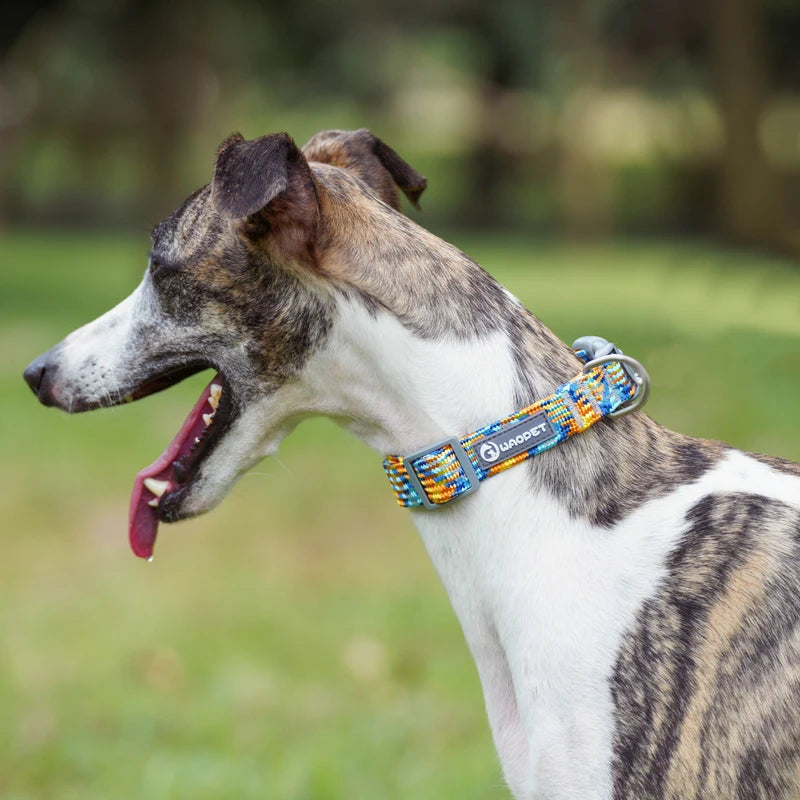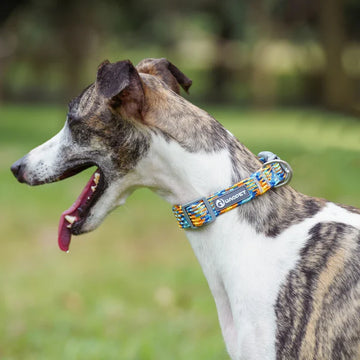Dog collars are an essential part of pet ownership. They serve as a tool for identification, safety, and control, making them one of the most commonly used pet supplies. But as important as dog collars are, many pet owners wonder if their dogs should wear them all the time. Is it safe or comfortable for your furry friend to keep their collar on 24/7? The answer depends on various factors, including your dog’s lifestyle, environment, and individual needs. Below, we’ll explore the pros and cons of continuous collar use and provide tips for responsible collar management.
The Importance of Dog Collars
-
Identification and Safety
Dog collars play a critical role in ensuring your pet’s safety. Most collars include ID tags that display essential information, such as your dog’s name, your phone number, and your address. These details can make a world of difference if your dog ever gets lost.

While microchipping is another excellent method of identification, it requires scanning by a vet or shelter. A collar with an ID tag provides immediate, visible information to anyone who finds your pet, significantly increasing the chances of a fast reunion. In fact, dog collars are often the first thing a stranger will look for if they encounter a lost dog.
-
Control During Walks
Collars are essential for leash training and controlling your dog during walks. They allow you to attach a leash securely and guide your pet. For dogs that are well-behaved on a leash, a simple collar is often sufficient. However, if your dog tends to pull or is difficult to control, you might consider switching to a harness instead. Many experts recommend pairing collars with the best dog leashes to ensure both safety and comfort for your pet during walks. -
Training and Behavior
Dog collars are also helpful for training purposes. From teaching basic commands to managing behavioral issues, collars can assist in reinforcing desired behaviors. For instance, a collar can be paired with training tools such as a clicker or a lead to help your dog understand commands. However, it’s important to use collars responsibly to avoid causing discomfort or stress.
Why Removing the Collar Might Be Beneficial
Although dog collars have numerous advantages, they don’t always need to stay on your pet around the clock. Here are a few reasons why you might consider removing your dog’s collar in certain situations:
-
Skin Irritation
Constantly wearing a collar can irritate your dog’s skin, particularly if the collar is too tight or made of rough materials. Over time, this can lead to redness, hair loss, or even open sores around the neck. Dogs with sensitive skin or allergies are especially prone to irritation.
To prevent this, ensure the collar fits properly. A good rule of thumb is that you should be able to fit two fingers between the collar and your dog’s neck. Additionally, consider using collars made from soft, breathable materials for added comfort. This is especially important if you plan to invest in pet supplies like collars or harnesses for extended use.
-
Risk of Snagging
For active dogs that love to explore or play outdoors, a collar can pose a safety risk. If the collar gets caught on something, such as a branch or a piece of furniture, it can cause choking or serious injury. This risk is higher for dogs left unsupervised while wearing collars.
Breakaway collars, which are designed to release under pressure, can be a safer option. However, these are not suitable for use with leashes, so you may need to swap them out during walks.
-
Comfort During Rest
When your dog is indoors and supervised, removing the collar can enhance their comfort. Dogs often appreciate the freedom of being collar-free, especially during sleep. Removing the collar at night allows their skin to breathe and reduces the chance of developing pressure sores.
Balancing Collars with Other Gear
In addition to collars, many pet owners use other gear, such as harnesses and leashes, to ensure their dog’s safety and comfort. For example, the best dog harness is an excellent alternative for dogs that pull on the leash or have neck sensitivities. Harnesses distribute pressure more evenly across the dog’s chest, reducing strain on their neck.
Harnesses are also great for small dogs, brachycephalic breeds like pugs, and senior dogs with health issues. If you decide to switch to a harness for walks, remember that your dog should still wear a collar with ID tags for identification purposes. Pairing a collar with the best dog leashes and a harness can provide a comprehensive solution for safety and control.
When Should You Remove the Collar?
While collars are important for safety, there are times when it’s best to remove them:
- During Sleep: Removing the collar at night ensures your dog can rest comfortably without restrictions.
- When Crated: If your dog spends time in a crate, removing the collar prevents it from snagging on the crate bars.
- During Grooming: Bathing or brushing your dog without a collar ensures you can clean and groom them thoroughly.
- In Safe, Supervised Environments: When your dog is indoors and under your watchful eye, they don’t necessarily need a collar.
By removing the collar in these situations, you can reduce the risk of skin irritation, snagging, and discomfort while still ensuring your dog’s safety at other times.
Tips for Choosing the Right Collar
To ensure your dog stays safe and comfortable, it’s important to choose the right collar:
- Material: Opt for high-quality materials such as nylon or leather that are durable yet soft.
- Fit: The collar should be snug but not tight. Always check the fit regularly, especially for growing puppies.
- Durability: Inspect the collar frequently for signs of wear and tear, and replace it if necessary.
- Purpose-Specific Designs: Reflective or LED collars are great for nighttime visibility, while breakaway collars are ideal for preventing snagging.
Conclusion
While dog collars are indispensable for safety, training, and identification, they don’t need to be worn at all times. Removing your dog’s collar during rest or in safe environments can improve their comfort and reduce the risk of injury. For outdoor activities, pairing a collar with the best dog harness and leash ensures both safety and control. By carefully managing when and how your dog wears their collar, you can strike the perfect balance between safety and comfort.
Remember, every dog is unique. Assess your pet’s specific needs, lifestyle, and environment to determine what works best. Whether it’s through collars, harnesses, or other pet supplies, your ultimate goal is to keep your furry companion happy, healthy, and safe.









